All you need to know about your products!

| 3DNews Vendor Reference English Resource - All you need to know about your products! |
||||||
 |
||||||
|
|
||||||
Leadtek PX7600GT Extreme – fast and quietAuthor:Date: 09/07/2006 PrefaceMuch time has passed since the announcement of G73 and emergence of first 7600GT video cards. The cooling system on reference video cards was definitely rejoicing for both the quietness and high performance, so it's no wonder that with time every eminent manufacturer has acquired products that differed from the first samples to the better. Today, we are introducing one of such cards to you. Leadtek PX7600GT ExtremeThe setting of the package in made in a style customary for Leadtek. The abundance of badges in the bottom part of the box traditionally informs of the key specifications of the video card. There are two points to note - the video card offers a proprietary PCB design and a highly efficient cooling system. In all the other respects, it is similar to modern video cards, so we are not going to dwell at that. The reverse side of the package wouldn't be so remarkable (is is normally the case) if it were not for the operating frequencies 590/1600 MHz for GPU/memory shown on it. Evidently, it's just the increased operating frequencies which allowed the developers of the video card to dub it proudly as "Extreme". Because of the efficiency of G73, the requirements to the PSU are rather modest - 300 W if a single video card is used, and 400 W if two video cards in the SLI mode are used. The remaining info is absolutely typical and once again reminds of support for HDTV, DVI, as well as various technologies for improving image quality both in games and watching video. Package bundle:
As you can see, the package bundle is quite typical for a mid-end video card. It is nice to see that it includes the game Serious Sam II, so let's hope that won't strongly affect the cost of the video card for end consumers. Upon the first glance on Leadtek 7600GT Extreme you can see that the company's engineers have a very thorough job. The massive copper radiator and a huge enough cooler should do a good job cooling the chip and thus provide a low noise level. Interestingly, in the upper left-hand corner we can see a space for the additional power supply connector, although the connector itself is not unsoldered. Perhaps, we are in for future versions having an "official" volt mode and thus reduced power consumption? The reverse side of the PCB is abundant with fine components and nothing more. The space for a video capture chip is provided, although the chip itself is not installed. As you can see, the PCB differs from the reference, but the memory chips on the reverse side are still missing. 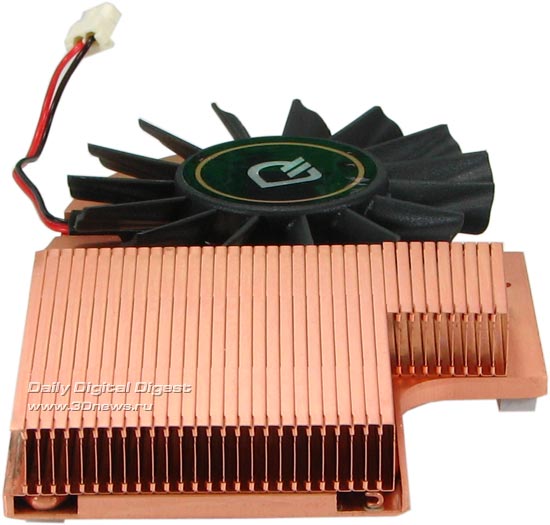 The design of the cooler is hiding a small surprise in itself. Apart from the rather thick base made of a copper-bearing alloy, inside the base there is a heat pipe, which should favor a good efficiency of heat spreading from the GPU. Why from the GPU only? Because the radiator does not touch the memory chips. We'll find it later whether it is good or not once we get round to overclocking and benchmarking. The noise from the turbines does not make annoy the ear and is felt only on the computer power-on. Unfortunately, it is hard to tell the rotational speed of the turbine since the cooler is connected via a two-wire scheme and the integrated tachometer (if available) is not enabled. To prevent chipping of the GPU core, there are rubber poles over the edges of the radiator foot. On removing the cooler, we can see again that engineers at Leadtek have developed own PCB for PX7600GT Extreme. The power supply system as well as positioning of the video memory chips have undergone changes. 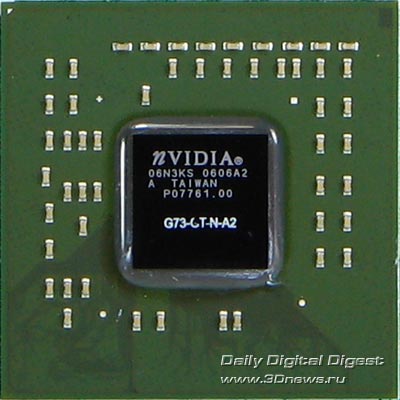 The video processor does not make any difference from its numerous brethren. The only exception is that the operating frequency, as was stated above, amounts to 590 MHz, instead of 560 MHz which is common for a typical 7600GT. Interestingly, if you take Leadtek 7600GT Extreme and run a utility that indicates its operating frequencies, you will be surprised to see that the GPU frequency equals …. 560 MHz! There is no deception about that. Indeed, in the 2D mode the GPU frequency amounts to 560 MHz and can be raised to 590 MHz on launching any 3D application. That does make sense. What's the point of heating up the VPU in 2D mode to make extra noise? 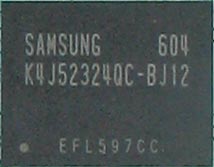 Another surprise from Leadtek 7600GT Extreme. It uses video memory of 1.25 ns access time, which is equivalent to 1600 MHz DDR. This is just the frequency the video memory runs and without any radiators. As compared to 1400 MHz in typical 7600GT, the boost is quite substantial, and Samsung memory normally overclocks well. The tests will tell if we can make use of the capability. The overall capacity of the video memory amounts to 256 MB, with the 128-bit memory bus. Thermal mode and overclockingThe below screenshot of RivaTuner is the best indicator of the VPU temperature in the idle mode and under load. We used a series of 3DMark'05 tests to warm up the hardware. 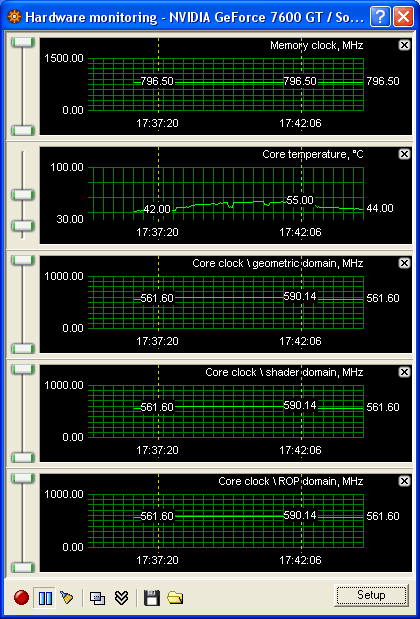 As you can see, the GPU temperature at rest is about 42-44 C. The GPU temperature under load is somehow higher, but does not exceed 55 C. The benchmarking was run on an open test bench, with the ambient temperature being 24-25 C. According to RivaTuner, the rotational speed of the video card's cooler for all the modes is set to 40% of the maximum. As we see, the radiator with a heat pipe and the cooler of relatively large diameter do their job of cooling the GPU more than successfully, even when running at half the capacity. In so doing, there is almost no noise from the cooler of the video card. But the overclocking proved a distress to us. We can even state that it was impossible to overclock the video card even at a little bit. Just see for yourself - as the video memory frequency rises, the test integrated into the video drivers "cursed" and rolled the frequency back to the nominal value. Probably, if there were any radiators on the video memory chips, the result would have been better, but you won't be able gluing radiators on top of the memory because of the cooler, and use of thermal washers is also questionable, because the upper two memory chips are not fully covered by the foot of the nominal radiator. Sighing with regret, we gave up overclocking the memory this time. With overclocking the GPU, things were no less sad than that. Our attempt to set the GPU speed to 650 MHz failed despite the powerful radiator, heat pipe and the cooler, which made it run at the maximum rotational speed. Some time afterwards, the system hung. The slight reduction is GPU frequency - down to 625 MHz - allowed to run all the tests, but the results proved to be lamentable - because of "freezes" the values of FPS and "marks" proved to be 1.5 times smaller than in the not overclocked video card. Why do we need such overclocking? We don't need that at all. So it didn't make sense looking for additional 5 or 10 MHz of frequency boost. So, today we'll be testing Leadtek 7600GT Extreme in the nominal mode. For comparison, we'll take a typical 7600GT with 560/1400 MHz and its direct competitor - X1800GTO with 500/1000 MHz. The frequencies in X1800GTO are smaller, but it uses a 256-bit memory bus.
For tests of the video cards, we used NVIDIA 91.31 WHQL and ATI CATALYST 6.5 drivers. Test ResultsFor viewing convenience, the results for standard GeForce 7600GT are highlighted in light-green. The results for X1800GTO are highlighted in red, and those for Leadtek PX7600GT Extreme - in bright green. "Synthetics"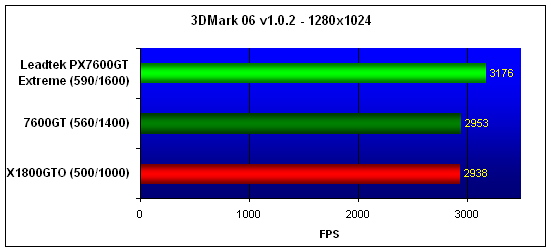 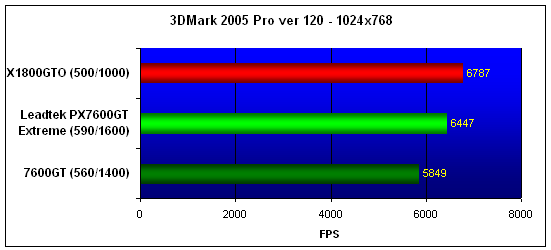 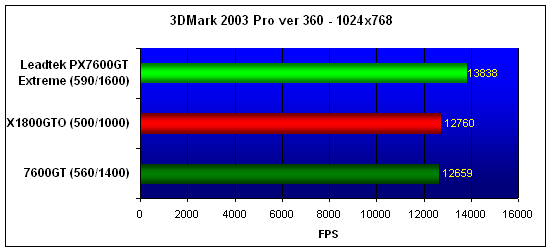 Half-Life 2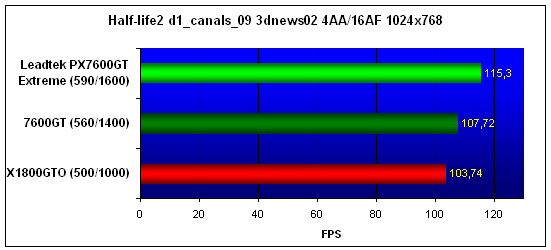 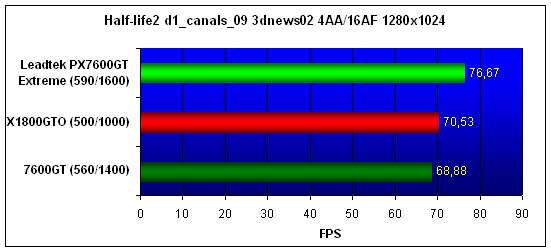 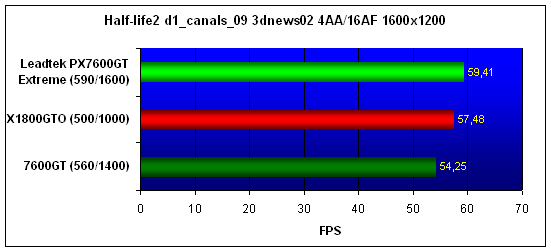 DOOM 3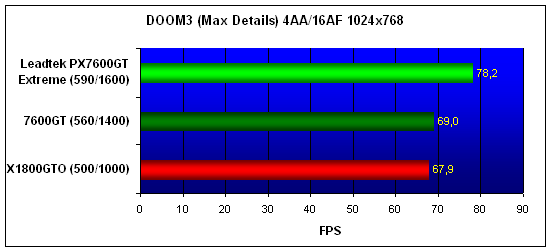 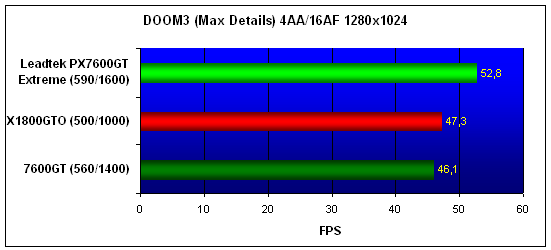 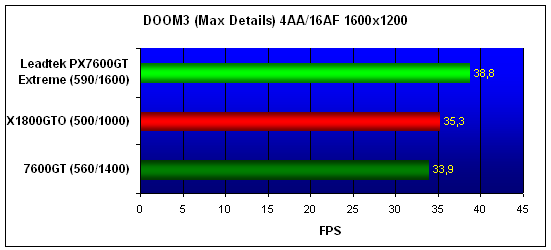 F.E.A.R.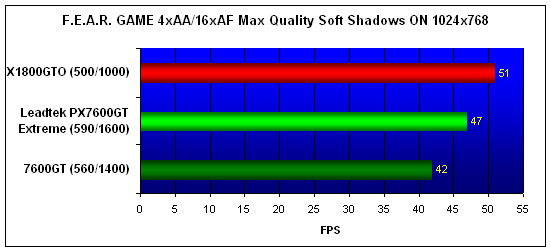 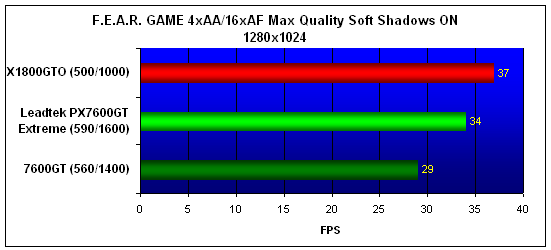 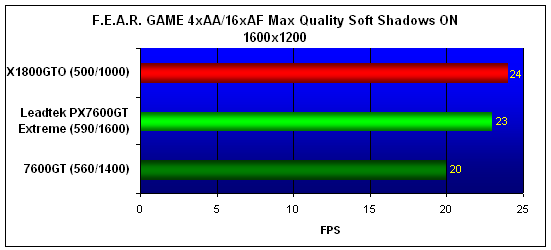 Final WordsOn the whole, the results have proved quite predictable. Due to overclocking the GPU and memory, Leadtek PX7600GT Extreme takes a lead over the standard 7600GT at nominal frequencies. As regards rivalry versus X1800GTO, the results prove quite close, so there is not definite leader. Despite the somehow smaller frequencies, X1800GTO is confident at applications demanding for the memory's bandwidth since it offers 256-bit width. On the whole, we can say that Leadtek PX7600GT Extreme is albeit not a masterpiece but quite a dignified product. The quiet and efficient cooler will appeal to the fanciers of quietness and calmness, and increased frequencies will let play favorite games at more comfort. |
|
|||||